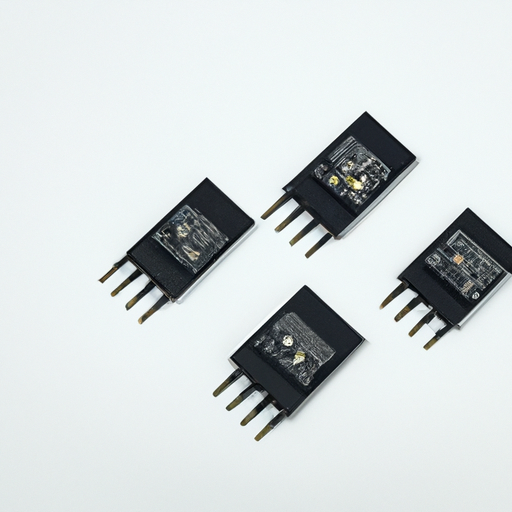RF (radio frequency) chips are essential components in a wide range of electronic devices, enabling wireless communication and connectivity. These chips are used in various applications such as smartphones, tablets, laptops, IoT devices, and automotive systems. There are several popular RF chip product types that cater to different needs and requirements. In this article, we will explore some of the most common types of RF chips and their key features.

RF transceivers are one of the most widely used types of RF chips. These chips are capable of both transmitting and receiving radio signals, making them essential for wireless communication. RF transceivers are used in devices such as smartphones, Wi-Fi routers, and Bluetooth devices. They enable devices to communicate with each other over short or long distances, depending on the frequency and power of the signals.
RF transceivers come in various configurations, including single-chip and multi-chip solutions. Single-chip transceivers are compact and cost-effective, making them ideal for consumer electronics. Multi-chip transceivers offer higher performance and flexibility, making them suitable for industrial and automotive applications.
Key features of RF transceivers include frequency range, data rate, modulation schemes, and power consumption. Manufacturers offer a wide range of RF transceivers with different specifications to meet the diverse needs of customers.
2. RF Power Amplifiers
RF power amplifiers are another important type of RF chip used in wireless communication systems. These chips are designed to amplify the power of radio signals before transmission, enabling long-range communication. RF power amplifiers are used in devices such as base stations, radar systems, and satellite communication systems.
RF power amplifiers come in various classes, including Class A, Class B, Class AB, and Class C. Each class has its own advantages and disadvantages in terms of efficiency, linearity, and power output. Manufacturers offer a wide range of RF power amplifiers with different power levels and frequency ranges to meet the specific requirements of different applications.
Key features of RF power amplifiers include power output, efficiency, linearity, and distortion. Manufacturers continuously strive to improve the performance of RF power amplifiers by developing new technologies and materials.
3. RF Front-End Modules
RF front-end modules are integrated circuits that combine multiple RF components, such as amplifiers, filters, and switches, into a single package. These modules are used to improve the performance and efficiency of RF systems by reducing signal loss and interference. RF front-end modules are used in devices such as smartphones, IoT devices, and automotive systems.
RF front-end modules come in various configurations, including single-band and multi-band solutions. Single-band modules are designed for specific frequency bands, while multi-band modules support multiple frequency bands for global compatibility. Manufacturers offer a wide range of RF front-end modules with different specifications to meet the diverse needs of customers.
Key features of RF front-end modules include frequency range, gain, noise figure, and linearity. Manufacturers continuously innovate to develop new technologies and materials to improve the performance and efficiency of RF front-end modules.
4. RF Filters
RF filters are passive components that are used to select or reject specific frequencies in RF systems. These filters are essential for reducing interference and improving signal quality in wireless communication systems. RF filters are used in devices such as smartphones, base stations, and satellite communication systems.
RF filters come in various types, including low-pass, high-pass, band-pass, and band-stop filters. Each type of filter has its own characteristics in terms of frequency response, insertion loss, and selectivity. Manufacturers offer a wide range of RF filters with different specifications to meet the specific requirements of different applications.
Key features of RF filters include frequency range, insertion loss, selectivity, and size. Manufacturers continuously develop new filter designs and materials to improve the performance and efficiency of RF filters.
5. RF Switches
RF switches are electronic components that are used to route radio signals between different paths in RF systems. These switches are essential for controlling the flow of signals and enabling various functions in wireless communication systems. RF switches are used in devices such as smartphones, base stations, and automotive systems.
RF switches come in various configurations, including single-pole single-throw (SPST), single-pole double-throw (SPDT), and multi-throw switches. Each configuration has its own advantages and disadvantages in terms of insertion loss, isolation, and switching speed. Manufacturers offer a wide range of RF switches with different specifications to meet the diverse needs of customers.
Key features of RF switches include insertion loss, isolation, switching speed, and power handling. Manufacturers continuously develop new switch technologies and materials to improve the performance and efficiency of RF switches.
In conclusion, RF chips are essential components in a wide range of electronic devices, enabling wireless communication and connectivity. There are several popular types of RF chips, including transceivers, power amplifiers, front-end modules, filters, and switches. Each type of RF chip has its own characteristics and features that cater to different needs and requirements. Manufacturers offer a wide range of RF chips with different specifications to meet the diverse needs of customers. As technology continues to evolve, we can expect to see further advancements in RF chip design and performance.